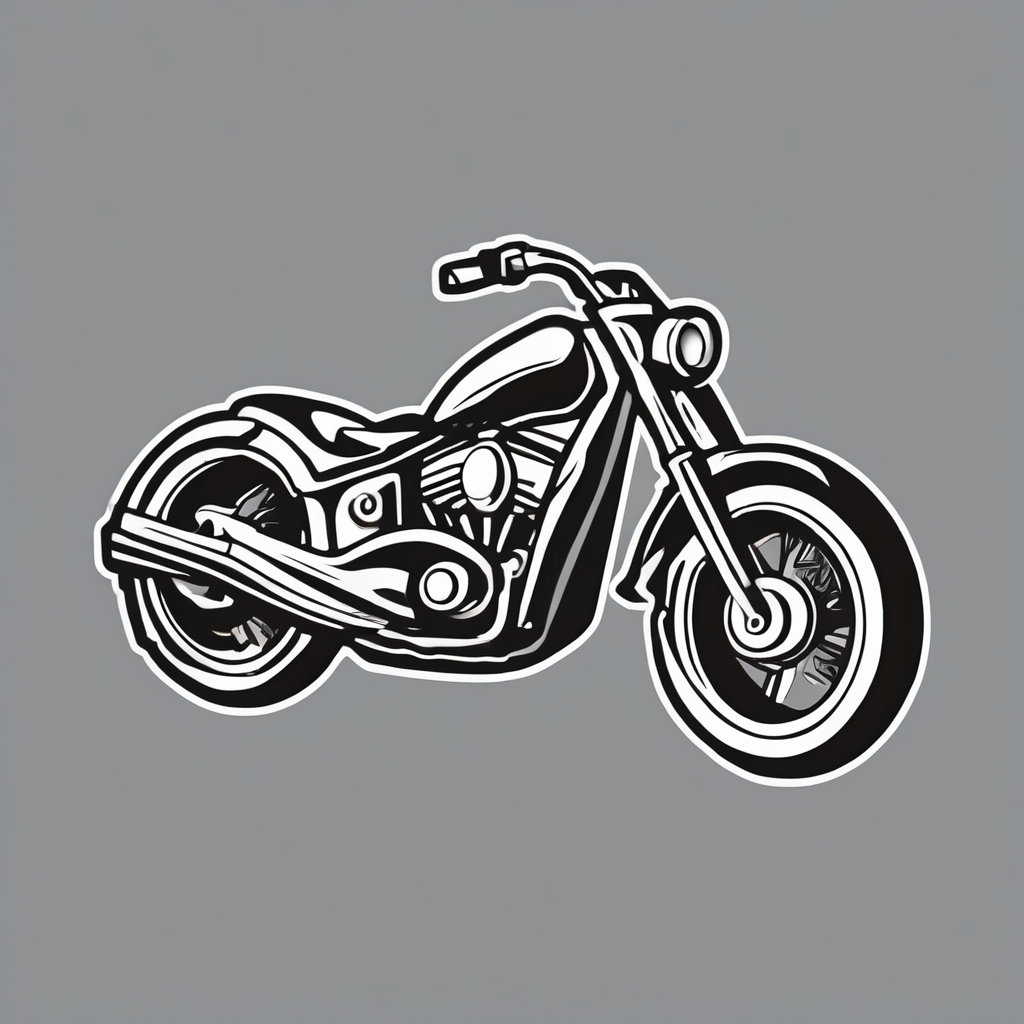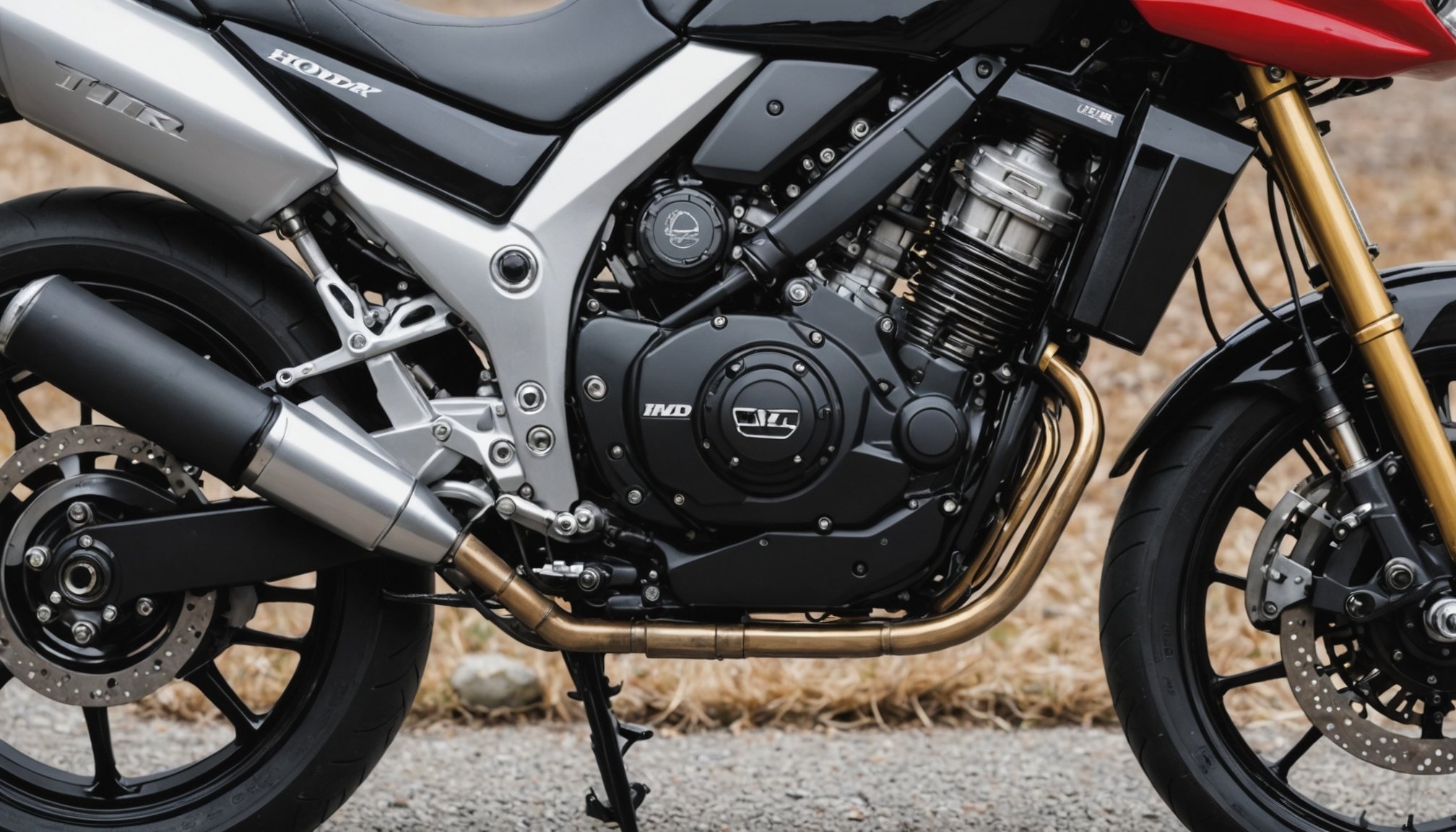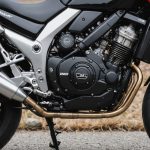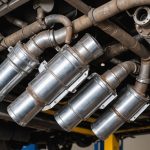Overview of Steering Damper Functionality
Motorcycle steering dampers are critical components designed to enhance stability and handling while riding. Specifically for models like the Steering Damper Honda VTR1000F, these devices play a key role in absorbing unwanted steering movements and vibrations.
A steering damper functions much like a shock absorber for the front end of your motorcycle. By controlling the oscillations in the handlebars, it prevents the vehicle from experiencing phenomena like “wobble” or “tank-slapper,” which can occur at high speeds. This ensures that the rider maintains better control, especially on uneven surfaces or during rapid acceleration.
This might interest you : Step-by-Step Guide: How to Successfully Install Crash Bars on Your Kawasaki Versys 300
A properly functioning steering damper brings several advantages. Primarily, it enhances rider confidence by providing smoother handling, reducing fatigue from continuous steering corrections. It also contributes to safety, helping to prevent accidents caused by sudden, uncontrollable handlebar movements.
However, if you notice signs of a failing steering damper, vigilance is crucial. Common indicators include unusual vibrations in the front end, persistent instability, or increased steering effort. If left unaddressed, these symptoms could compromise motorcycle performance and rider safety. Therefore, regular inspection and maintenance of the steering damper are essential for optimal riding experiences.
Also to see : Top Techniques to Minimize Handlebar Vibrations on Your Suzuki V-Strom 650
Necessary Tools for Replacement
When preparing for a steering damper replacement on your Honda VTR1000F, having the right tools on hand is essential. Using the correct tools ensures a smoother process and prevents potential damage to your motorcycle.
Essential Tools
At the core of your toolkit should be the basic maintenance tools:
- A set of wrenches and sockets, typically metric sizes, is necessary for removing and securing bolts.
- Flathead and Phillips screwdrivers are crucial for various fasteners.
- Pliers of various types, including needle-nose and adjustable, aid in gripping and holding parts.
Additional Recommendations
While the basic tools are a must, consider adding the following for enhanced efficiency:
- Torque wrench: This is invaluable for ensuring bolts are tightened to the manufacturer’s specifications, preventing overtightening and damage.
- A rubber mallet can be useful for gently persuading parts into place without the risk of damage that a metal hammer might cause.
Safety Equipment
Protect yourself with essential safety gear:
- Wear gloves to protect your hands from sharp components.
- Safety goggles shield your eyes from debris and potential fluid splashes.
Investing in these tools and safety equipment not only streamlines the replacement process but also significantly enhances personal safety.
Step-by-Step Replacement Process
Replacing the steering damper on a Honda VTR1000F can significantly improve handling and stability. Carefully follow this guide for a smooth installation experience.
Preparation and Workspace Setup
Before starting the replacement process, ensure you have a clean and organized workspace. This minimizes the risk of losing essential parts or tools and helps maintain focus. Check the motorcycle for any existing issues or damages that might affect the replacement process. Ensure the bike is stable, ideally using a paddock stand.
Removing the Old Steering Damper
Begin by disassembling the existing steering damper. Carefully remove any covers or panels obstructing access. Take care not to damage nearby components like the fork tubes or handlebar. Label screws and parts removed during the process to simplify reassembly. Use appropriate tools like a socket wrench for optimal grip and leverage.
Installing the New Steering Damper
Align the new steering damper properly to ensure smooth performance. Position it according to the manufacturer’s instructions, making sure it’s neither too tight nor too loose. Secure the bolts firmly, adhering to the manufacturer specifications for torque settings. Double-check the alignment and tightness before concluding, ensuring the system is properly fixed and functional.
Troubleshooting Common Issues
When addressing steering damper problems on a Honda VTR1000F, certain factors should be considered to ensure a smooth ride. During installation, it’s crucial to avoid common pitfalls like incorrect alignment or loose mountings. Misalignment can create handling issues, while loose mountings may cause the damper to underperform.
Symptoms of Improper Installation
To detect improper installation, pay close attention to handling changes. If the Honda VTR1000F exhibits excessive steering stiffness or unusual vibrations, these may indicate installation issues. Additionally, a steering damper that either “locks” or offers too little resistance can adversely affect safety.
Testing the Setup
To confirm a successful installation, testing is key. Begin by checking for smooth movement across the full steering range. Any unwanted resistance or noise should be investigated immediately. For thorough testing:
- Have another person visually inspect the damper as you maneuver the handlebars from side to side.
- Listen for irregular sounds like knocking, which could indicate improper tension.
- Gradually increase riding speed in a safe environment to assess how the damper performs under varied conditions.
Through careful assessment and preemptive checks, riders can ensure their Honda VTR1000F runs optimally with the new steering setup in place.
Maintenance and Inspection Tips
Regular inspection of your Honda VTR1000F’s steering damper is crucial for optimal performance and safety. Establishing a consistent examination schedule is a fundamental part of your motorcycle’s upkeep. Ideally, inspect your steering damper every 5,000 miles. However, checking it after any significant rides or if your motorcycle behaves unusually is prudent.
To maintain the steering damper at its best, ensure you keep it clean and free from debris. Lubricating any moveable parts is essential to prevent wear and maintain smooth operation. Avoid excess oil applications to lessen the risk of dust accumulation, which can interfere with the damper’s performance.
Recognizing signs that your steering damper requires attention can prevent larger problems. Look out for leaks, unusual noises, or difficulty steering, as these may indicate a need for service or replacement. Addressing these issues promptly can ensure your bike maintains its handling capabilities and keeps you safe on the road.
These maintenance tips create a controlled and safe riding experience. By attending to small issues during regular inspections, you can extend the life and effectiveness of your steering damper, contributing to smoother rides on your Honda VTR1000F.
Safety Precautions
Considering safety tips is essential when performing motorcycle maintenance, especially on a Honda VTR1000F. Proper safety gear serves as your first line of defense. Always wear gloves to protect your hands from potential cuts or burns, and safety goggles to shield your eyes from debris or fluids. A sturdy, well-lit workspace reduces the risk of accidents.
Minimizing risk during the replacement process involves following a systematic approach. Ensure that the motorcycle is stable on a stand before beginning any work. Disconnect the battery to avoid electrical hazards. When handling parts, maintain a clean environment to prevent contamination or mismatches that could compromise safety.
Final checks play a crucial role in confirming that all components have been securely fitted. Double-check fasteners and connections, ensuring they meet the specified torque values. Verify that fluids are at their appropriate levels, and inspect for any visible leaks. Prior to hitting the road, conduct a brief test run in a controlled area to assess the motorcycle’s performance. By taking these measures, you enhance reliability and ensure your Honda VTR1000F is road-ready.











